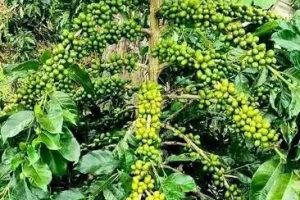
. An opportunity from a calamity
Ethiopia has been conducting different researches to recycle the surplus liquids wastes oozing out and solid by-products disposed from leather industries, disclosed Leather Institute Development Ethiopia (LIDI).
According to the Institute’s Communication Director Birhanu Serja during the leather processing task of tanneries, different amounts of liquids are exuded into the environment. This recklessness highly pollutes the environment hanging a question mark over the life of residents around the industries and beyond. The trend strips of victim’s capacity to discharge tasks under normal circumstances.
The damage being inflicted on human beings disturbs the factories’ taskforce in other ways. This in turn put a spoke in the wheels of the country’s growth and development. Lots of researches conducted on leather processing and production have indicated that from one tone of leather only 270 kg is put for effective use. The remaining 730 kg lays waste. In a form of chemicals-laden disposables, the latter finds its way into rivers, lakes and recreational areas. It as well pollutes the atmosphere.
As studies indicate, almost all the leather industries or factories found in the country have the bent of discharging their byproducts to lakes and rivers to date. The concerned Federal Environment, Forest and Climate Change Commission (EFCCC) has currently set a policy to regulate each factory regarding the level of disposing their respective byproducts.
Even if these industries were built to enter into production acquiring level II status—in the former case entitles support from the municipality — this couldn’t ward off their harmful byproducts as per the policy set and indicated regarding the case in point. Each factory should properly remove its byproducts by its own as the new policy sets.
Meanwhile, dry wastages have been for long disposed by city’s municipality. But both liquid and dry waste sewerage authorities voice complaint that the municipality couldn’t manage this enormous task single alone. Regarding this, it has demarcated specific grounds for each tannery so that they manage their respective wastes in recommended ways.
Based on the experiences of Awash and Abyssinia Leather industries regarding how they eradicate their byproducts, The Ethio-Leather Industry has begun to analyses the research regarding problems that crop up during periods of operation .
Ethio-Leather Factory’s Design, Research Incorporation and Quality Convincing officer, Solomon Getu, seconds the ideas of Birhanu. But nowadays the disposal of byproducts in each factory is being handled in a good manner after the warnings given to them. And communities close by the industries are also forestalling health-related hazard, for the areas get spared of pollution.
He added that this has lots of process because from the tanneries to the disposing rivers and dumping grounds there would be too much pollution that continues unchecked. In the research of converting Tanneries’ solid waste to commercialized products, the project has kick started in Ethiopia coming up with study-based recycled products preferable in the global market.
According to the research, the sector can produce organic fertilizers like compost from wastes. And also, among others, Bafing destine, dry shefing destine, and Cromme shefing leather board and Crome powders could be produced.
Furthermore, treated, the used water could also be recycled. There is a plan to reuse those destine byproducts in the form of inputs for the factory and industry. Inputs like tanning chemicals and protein feeler. Protein feeler in its turn is produced from Belt trimming glue. After filtration, used water and the sludge could be used for construction purposes such as bricks, as Solomon described for The Ethiopian Herald.
Solomon wrapped up his explanation about the research saying that when the ball gets rolling, communities around the factory or industry stand a chance to parry the pollution of their surroundings. And both tanneries and nearby residents could back scratch each other in the form of job creation and income generation working hand in gloves. They could actualize an opportunity from a calamity. It is heartening to note that there are international governmental and none governmental organization willing to extend support.
The Ethiopian Herald, December 8/2019
BY MUSSA MUHAMMED





